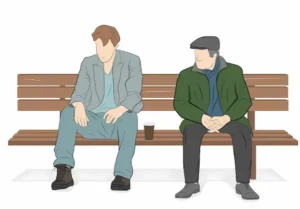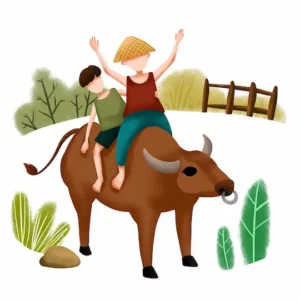
Was that a tear I saw dangle in Gopal’s left eye? I wasn’t sure.
But there wasn’t a doubt in my mind of the gentle current of friendship and care that connected us—a friendship like when we were children—pure, simple, uncomplicated.
We had been walking for about half an hour through the winding tracks in Suvarnodayam, a “sacred grove” perched between the relatively quiet road that connects Aluva to Cochin International Airport. The word Suvarnodayam is Malayalam and stands for “Golden Dawn.”
This place is fortunately not that crowded, either because very few people know about it or because it has picked up a reputation of being a place for lovers—“secret lovers” to be specific! In a conservative community that is skeptical about romantic love, secret love is the only way. These secret lovers do not have much respect in the community. So when couples turn up at the park gate hoping to catch a few moments together, passersby—even the people maintaining the park—look at them with the scorn usually reserved for criminals.
Gopal and I have shown up here for several walks, each time hoping to find peace and healing through the walk. Sometimes doubts about whether I’m troubling him too much bother me. But one of the things I’ve learnt over the years of knowing Gopal is that it is possible to see pain as a universal experience that needs attention, rather than just a personal one. According to Gopal, he wasn’t doing anything for me; he just happened to be my friend and in a better position to be of value. But that aside, did I have an option of not availing his gentle support?
Of course not. When one is drowning in an ocean, propriety is not a priority. Such was the pain.
After a while of walking, Gopal turned my way and enquired, “I see today has been particularly difficult?”
I nodded, merely surviving another moment of existence.
“Do remember, this daily walk of ours does serve a limited purpose in the healing, which is important. So I would not bother about other things,” said Gopal.
I was curious—did Gopal read my mind about being a bother to him? I was not sure. However, I didn’t feel like clarifying it.
My mind was still fixated on my illness. I had stopped counting days. Perhaps it was months or perhaps a year was over. I didn’t know. I didn’t want to know.
Of the very catastrophizing ideas that visited me, one of particular concern was, “What if this trap is forever?”
Gopal would teach me later that the conviction of the negative imagination is one of the debilitating features of the illness. In other words, you suffer your “what if” questions intensly. Each time the thought would arise, it would violently shake the thin strand of hope on which my entire life appeared to be hanging. Therefore, I thought to myself, why introduce thoughts that compound the confusion if I can help it?
But could I help it? No, almost never.
The thought emerged anyway—“How long had I been in pain? Will I ever make it out of this? Can I hold on?” Several memories of enduring the disturbance and all the painful sensations reappeared with renewed intensity.
“Gopal, I’m afraid that if the pain becomes unbearable I may not be able to hold on.”
I sank in my sorrow. It was as if the distant ray of hope I was banking on, dissolved, and dissolved very fast.
The thing with disturbing intrusive thoughts is that we appear not to have any control over them or the disturbing sensations they generate. The more we do not want to think about them, the more they show up. Sometimes they are referred to as unwanted thoughts, and quite rightly so.
It must be understood that these are not like the thoughts that appear to “normal people,” for example, before we are about to make a presentation to an audience: “What if I goof up? What if I’m not able to respond to a question from the crowd?” While these fears and doubts are uncomfortable, if properly channeled, the nervous energy generated by such thoughts can help improve preparedness for the presentation. And if not channeled, they usually disappear after the event.
However, intrusive thoughts, as a mental illness, can wreak havoc, making it difficult or even impossible to function for days, months, or even years.
Gopal’s voice disentangled me from my troubled thoughts.
“I hate to sound like a motivational speaker, but do consider this: the decision to hold on is a choice! And each time this choice is made, deep inner transformation happens.”

I took a moment to reflect. I wasn’t sure if it was Gopal’s assuring voice or the gist of his words, but I certainly began to feel a wee bit better.
I looked at Gopal, who was now playing with a dry leaf he had picked up along the way to the park bench we were sitting on. He raised it against the sky and surveyed it with pure curiosity from various angles, with amazement as one would with some kind of expensive gift one received.
I thought to myself the same thought I have thought several times, “How could Gopal be such an exemplary human being! Gentle, wise, extremely patient and thoughtful.”
This was my 18th year and third severe episode with mental illness where the mind took turns experiencing anxiety, intrusive thoughts, and depression almost cyclically. It seemed that the mind had a mind of its own and was secretly obsessed with generating the discomforting sensations and experiences these issues created in my mind and body.
Somehow, magically, Gopal was by my side each time. And not once had he shared anything that was not gentle. Nor had he judged me or my situation. The most exemplary qualities I saw in him were patience and phenomenal commitment to contribute to my recovery in any way possible. It seemed he almost had infinite patience and infinite love and compassion.
Where did he learn these from? How could a cowherd know so much? How could someone with no formal education be so sharp and wise? What is the source of such fine commitment and compassion?
Was he “god-sent”? Was Gopal “God” himself?
Perhaps re-birth is a truth, perhaps in another birth, or in several other births he too had faced similar issues of the mind and they helped sharpen his skills. Probably he had met several people who suffered and had come up with the understanding that the best that one can do for dealing with mental illness was to work on creating an environment conducive to recovery, to try and avoid doing anything that might contribute to agitating the mind and above all, to ‘allow time to pass’. The absolute wonder was that Gopal conducted himself with the awareness that none of these were easy things for the suffering ill.
I recalled how I first met Gopal – it was so many years ago. The two of us were young boys – perhaps 7 years old. I had been complaining to Mum almost every day about not having any ‘best friends’ at school. As a result, it became an uphill task for Mum to convince me to go to school each day. She assured me that eventually I would find a best friend, nay! several best friends. But my young impatient heart couldn’t wait. And then one day I simply refused to budge from bed. “No best friends, no school”, I had said.
Perplexed, Mum did her best to convince me. Helpless, she went to the little altar and said a prayer. When she returned there was a glitter in her eyes plus she had a newfound confidence and faith. And she promised me that if I would be a bit more patient, I would find a best friend for life.
During those days I believed mum had magical powers if she only wanted to use them. For example, I believed that she could protect me from all of the demons which I feared to be lurking in the dark. So when she said I would find a best friend for life, I knew she couldn’t be wrong. Therefore I resolved to walk the long way to school with faith. My walk was filled with inspiring imaginations, “What would be his name?” “Which class would he be from?” “What would be his date of birth?” “And his zodiac sign?” “Would he be a Malayalee just like myself, or a Tamil or a Hindi-speaking boy?” So many questions…
I’m not sure whether it was the exact day or whether it was one of the days that followed Mum’s promise, but one day after I took the last turn from which the school gate was visible, a playful little calf suddenly crossed my path, as calves are wont to do in my village, almost knocking me down. And right behind the brown animal, ran a smiling kid about my age, aiming for the lead rope – now looking at me with a nervous smile, and now looking at the calf.
When he finally managed to get the naughty brat of an animal under control, he turned to me, full of warmth and friendship and apologized for the behaviour of his calf. The calf stood on obediently looking at the both of us in turns. In that exact instant, the three of us were friends – the calf, me and the boy, who said his name was Gopal.

And that’s the story of how I met my friend for life. Presently we are both 50 and it’s a miracle how Mum’s words have come true.
But wait a minute, was this really the story of how I met Gopal? Is my mind playing tricks with me? Why, this sounds almost like a story I read in my younger years.
Back to reflecting on what Gopal had just said – reverence and gratitude emerged in my heart. A part of me wanted to celebrate the gift of this amazing thing called friendship, but the other half, which felt so much larger, and often called the shots during the illness, was suffocating me with fear, confusion and sadness.
Gopal looked on, he seemed to know exactly how I felt.
0 Comments